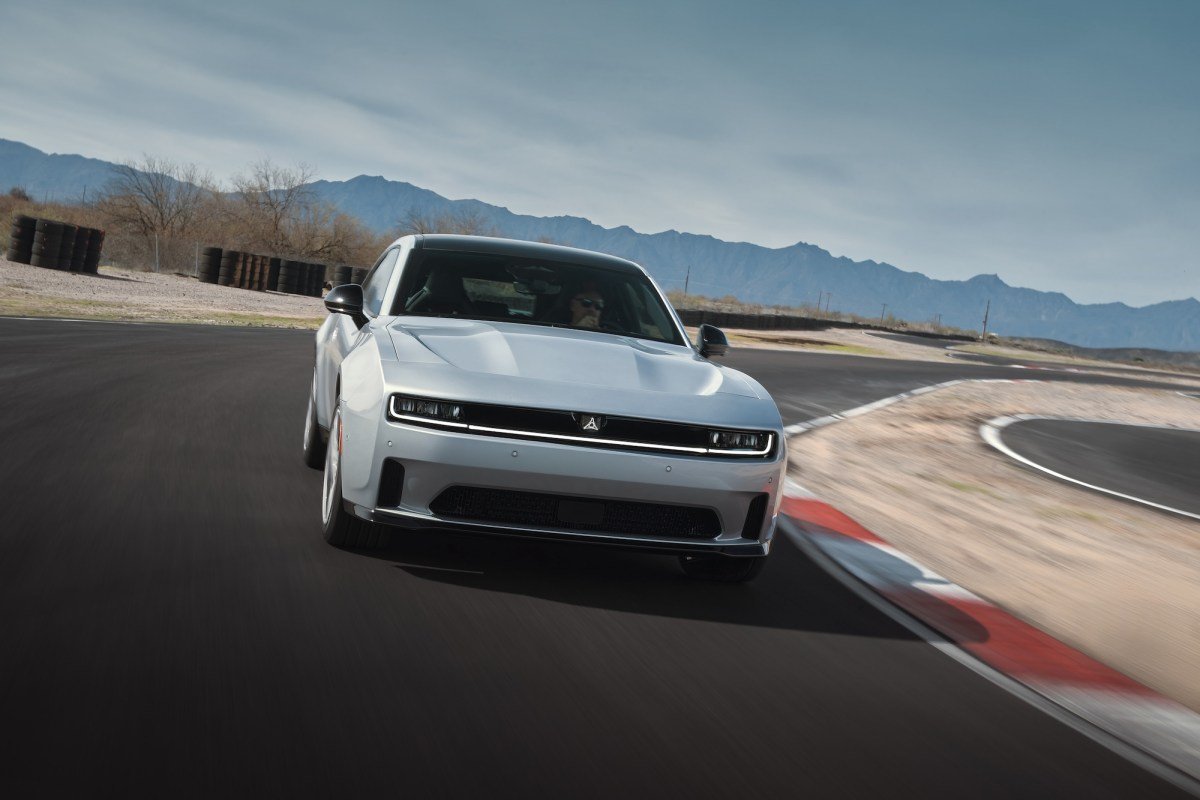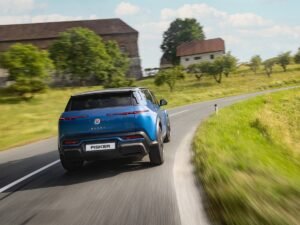Stellantis Debuts Two Electrified Versions
of the Iconic Dodge Charger
Tuesday, Stellantis introduced two all-electric versions of the beloved Dodge Charger. These new models are packed with the same features that muscle car fans have come to adore, down to a system that mimics the rumble of a Hemi V-8 engine.
Set to enter production in mid-2024, the two new Dodge Charger EV coupes include the 2024 Charger Daytona Scat Pack and the milder Daytona R/T trim. Meanwhile, four-door versions are scheduled to begin production in the first quarter of 2025. Pricing for all vehicles has not yet been announced by the automaker.
Pushing Towards Sustainability
These innovative Dodge Charger models are part of Stellantis’ strategic plan to reduce their global carbon footprint by 50% by 2030, with a goal of achieving net-zero carbon emissions by 2038. This ambitious plan also includes financial targets, such as doubling net revenues to $335 billion per year by 2030 and maintaining double-digit profit margins.
The upcoming Charger EVs, along with other electrified vehicles in the Stellantis portfolio like the Fiat 500e and upcoming Ram Ramcharger and Ram 1500 Revolution EV, play an important role in this strategic plan.
Embracing Change
Despite introducing these all-electric versions, Dodge is not abandoning their gas-powered muscle cars entirely. According to the brand, the next-generation Charger will also offer internal combustion engines. However, these engines will not be powered by a traditional Hemi V-8. Instead, Dodge is opting for a more efficient and cleaner 3-liter twin-turbo Hurricane inline-six engines, which the brand’s CEO Tim Kuniskis claims will offer more power and torque than the outgoing Hemi engines.
Powering Ahead
The gas-powered two-door and four-door Dodge Charger vehicles are also set to enter production in the first quarter of 2025. The entire lineup, including the battery electric versions, will be assembled at the company’s factory in Windsor, Canada.
Facing the EV Landscape
The 2024 Dodge Charger launch comes at a critical moment for U.S. and European automakers as they navigate the constantly evolving landscape of electric vehicles, with Chinese manufacturers gaining ground. Despite an expanding market share for EVs, some automakers have paused or downsized factory buildouts for EV assembly or battery manufacturing due to softened demand, particularly for higher-priced luxury EVs.
Staying Competitive
In a recent interview with TechCrunch, Stellantis CEO Carlos Tavares shared that the company is instead going “flat out” on EVs, not following the lead of competitors. “I’m keeping it flat out on the EVs for several reasons,” Tavares explained. He also emphasized the importance of not neglecting gas-powered vehicles, citing potential political shifts in upcoming elections in Europe and the United States that could impact environmental regulations and incentives.
“Thanks to the 2030 strategic plan, I have the leisure and privilege of not having to bet on election results,” Tavares continued. “I can wait until the end of ’24, and then decide whether to increase capacity, invest in capacity, or not invest, based on an acceleration that will be driven by a dogmatic scenario or a slowdown that could be driven by a populist scenario. So that’s why we keep it flat out.”
Exploring the Specifications
The 2024 Charger Daytona Scat Pack and Daytona R/T trim will both come equipped with all-wheel drive and a 100.5 kilowatt-hour battery pack. From there, customers can prioritize either speed and torque or range.
The 2024 Charger Daytona Scat Pack boasts 670 horsepower and can accelerate from zero to 60 miles per hour in just 3.3 seconds. It also has an estimated quarter-mile time of 11.5 seconds and a top speed of 134 mph. However, this impressive power and acceleration comes at a cost – the Scat Pack has an estimated range of 260 miles.
Meanwhile, the Daytona R/T trim offers 496 horsepower and a 0 to 60 mph time of 4.7 seconds, but with a longer estimated range of 317 miles.
Customized Driving Modes
The two trims diverge when it comes to specialized driving modes such as drifting, donuts, track, and drag. In the Scat Pack trim, these driving modes perform as their names suggest. For example, track mode maximizes vehicle performance on smooth, dry surfaces, while drag mode is recommended for use on an enclosed dragstrip for optimal launch and straight-line acceleration.
Donut and drift modes also allow for more controlled drifting, with drivers able to select three levels of slip angle, as well as the option to rotate around either of the front wheels without interference from the traction control system.








